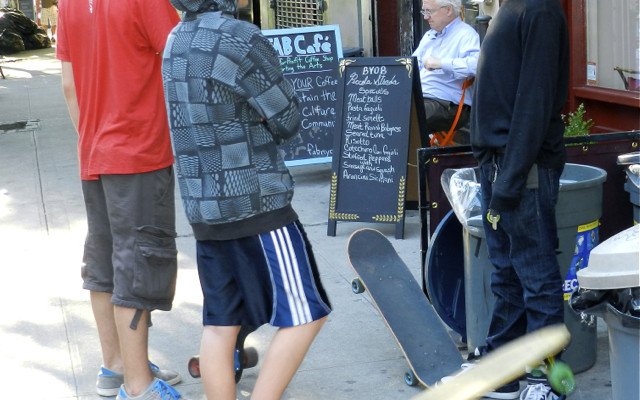Unpacking Design Thinking: Empathy
When is the last time your principal, executive director or boss asked you to redesign a curriculum, program or product launch by empathizing with students, grant recipients or consumers? Probably not recently. But in a world saturated with the memes of creativity and innovation, empathy can be the basis of success.
Design thinking consists of five spaces: empathize, define, ideate, prototype, test. And the very foundation of design thinking is empathy. Sometimes referred to as “discovery” or “understanding” in various explanations of design thinking, empathy requires understanding the needs and challenges of the people, or users, of a product, experience or system.
All too often, those of us who design solutions to challenges in education, philanthropy or entrepreneurship often forget to consider that the ultimate usefulness of a product or experience depends on whether or not people actually need it and will use it.
David Kelley, founder of the Stanford University School of Design (d-school) and chairman and founder of the design firm, IDEO, recently shared a poignant story about empathy with graduating engineers at Dartmouth College.
Doug Dietz is a R&D professional at GE, which makes big MRI and CT scanners. And Doug was very proud of what he did because his machines were saving lives. And then he came to the d-school and took a couple of courses and we kind of turned him on to this empathy work, and so he decided he really wanted to go out and understand people using his machines.
So he went to a hospital, and there was a family with a young child who was crying. And he asked what was going on, and he was told that the child was scared of the machine. And it turned out that for 80 percent of the children who had to go through CT scans, they had to call the anesthesiologist to sedate them to get through the machine.
This crushed Doug. He didn’t have any idea this was going on.
And so he started to solve the problem. He used his design-thinking techniques, he got everyone involved, he hired people to train the staff, and in the end he built a new kind of scanner called the Adventure Series, which is the old kind of scanner with stickers on it. And those stickers make the scanner into a pirate ship or a space ship, and then when the kids come in, they say to them: “You’re going to go into the pirate ship. Can you be really quiet? You don’t want to scare the pirates.”
And it changed: It used to be that in this hospital 80 percent of the kids needed to be anesthetized, and it went to 5 percent, all with changing the attitude, understanding what was important to the kids, he was able to change that. The ending of that story is really great, where he tells — every time he tells the story he cries — but he tells the story of he’s there later, much later after the Adventure Series is in place and a little girl runs up to her mother and says, “Mommy, can we come back tomorrow?”
Kelley’s story explains why empathy is the centerpiece of human-centered design thinking. In order to create an innovative solution to a problem, it is essential to observe people–what they do, how they live, and their stories. Observing people builds an understanding of how they think and feel, what they value and how they see the world. Empathy is not only observation. It almost always includes some sort of engagement with the people who actually use a product or service. Engagement may be a conversation or a step-by-step explanation on how things are done.
To create meaningful innovations, you need to know your users and care about their lives.
Design thinkers reflect on the information shared with them by users, understanding that the “most powerful realizations” may come from understanding the disconnection between what someone does (observation) and what someone says (engagement). This happened to Doug Dietz at GE when he found a way to ease the anxiety and fear of children needing an MRI. This happened to me in Peru when Knowledge Without Borders worked to improve a school experience for students at Madre Admirable in the El Agustino district of Lima.
While empathy is the foundation of design thinking, there are other “spaces” to explore. These subsequent exploration reveal the creative zigzagging process leading to innovative products, experiences and systems.















No Comments Yet!
You can be first to comment this post!